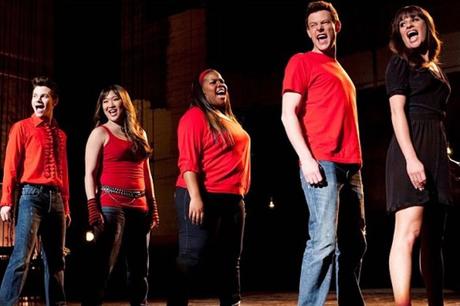This post contains SPOILERS for the series finales of Glee, How I Met Your Mother, Eureka, Friends, Chuck, Gilmore Girls, Smallville and Parks and Recreation.

Some series, on the other hand, have completely uncontroversial outcomes. Ross and Rachel end up together. Clark Kent becomes Superman. Lorelai realizes she belongs with Luke. That’s all fine and usually leaves the audience feeling good. Others go purposefully crazy, almost like they want the audience relieved that it’s over. (I never watched Seinfeld, but have read several accounts that such was the case with the end of that show.)
Wherever characters wind up in their personal or professional lives, what makes a finale brilliant is what I call pilot-finale symmetry. By far, the best example I’ve ever seen of this device was in Syfy’s Eureka. I wasn’t a huge fan of that show; I had only ever seen the pilot and a handful of episodes in each season before watching the finale. But my mind was blown when Jack and Zoe are leaving Eureka for the last time and they drive past themselves driving in. That, my friends, is payoff. It doesn’t change the storyline of the characters, per se, but it shifts our whole understanding of the story.
Some finales execute a smaller scale pilot callback. Chuck (Chuck), though his spy skills have grown a hundred fold, disarms a bomb the same way he did in the pilot. Lorelai and Rory (Gilmore Girls) are last seen eating at the diner just as they were when we first met them. But when I talk about symmetry I’m taking about taking something we already know and deepening it. Glee did this really well, but more on that in a moment.
Many finales flash forward, as if to oblige the audience’s need to know that everything turns out okay. This can be fun, but I think it underestimates the viewer’s imagination. I’m loathe to admit it, but I found the recent farewell of Parks and Recreation disappointing. It bent over backwards to prove to us that everyone in Leslie’s circle had a happily-ever-after, squandering precious time that could have been used to just tell a story to its conclusion. There were a few brief flashes of the pilot, but they were used as set dressing, for cheap tears. Although the final season was an absolute hoot, the ending made the show’s swan song feel like a gimmick.
Glee tried to have it both ways. The second hour was the flash-forward-everything-turns-out-peachy variety. (Seriously, everybody ended up famous?) It was the first hour that was truly creative. Titled “2009,” it told the same story as the pilot, but with a fresh perspective, by filling in action that originally took place off-screen. It tapped into the originality that made that made people sit up and take notice when the show premiered — that made it groundbreaking and unexpected — but was eroded in a deluge of guest stars and themed episodes. We found out things we didn’t know about characters we’d just spent years getting to know, most notably Kurt. Kurt has always been the “star” of the show for me, his relationship with his dad being the most moving story. We knew that Kurt had suffered while isolated in the closet, but this showed us how much.
The finale also gave us a taste of an Everyone Meets Everyone episode. Such a device could have been stuffed in as filler anytime during the course of the series, but this gave the show bookends that allowed us to focus on the original set of core characters including, significantly, one who died along the way. The initial performance of “Don’t Stop Believin'” led by Finn and Rachel blended smoothly into the “new” action.
We needed a little more of course, considering that Cory Monteith, and not just his character, died tragically in 2013. In the finale’s second half, it was impossible not to tear up when the McKinley gang dedicated the auditorium to Finn. But then, did they even need to flash forward to do that? It would have been just as touching in the present (2015).
As a pilot enthusiast, I love a finale that knows its roots. So I could have stopped watching after the first hour and been perfectly satisfied.
